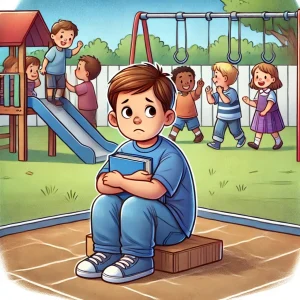How Can Speech Therapy at Home Help Your Child’s Language?
By Wellness Hub
Last Updated: October 23, 2024
Discover how you can make a difference in your child’s language journey with effective speech therapy at home!
Language development in early childhood is a crucial foundation for your child’s overall communication skills and social growth. As a parent or caregiver, you play a key role in shaping this journey, especially when supporting speech therapy at home. Simple, everyday interactions can significantly enhance your child’s language development, creating a positive impact on their speech and communication skills. With guidance and practical speech therapy for kids, you can foster an environment that nurtures your child’s language abilities and helps them thrive.
Why Speech Therapy at Home is Effective
Speech therapy at home offers a unique set of benefits that can significantly enhance a child’s language development. By working with your child in a familiar environment, you create a sense of security and comfort, which is essential for effective learning. Children tend to be more relaxed and open to participating when they are in a space they know well, free from the distractions or pressures of an unfamiliar setting.
One of the greatest benefits of speech therapy at home is the opportunity for consistent practice. In a home setting, parents can integrate therapy exercises into daily routines, allowing for regular, short sessions that reinforce speech development. This consistency helps children progress faster and retain new skills, as they are being exposed to speech therapy techniques regularly.
Additionally, home-based speech therapy allows parents to be actively involved in their child’s progress. Speech therapy at home for toddlers is especially effective because parents are the ones who interact with their children the most. By being hands-on in their therapy, parents can ensure that the skills learned during sessions are continuously practiced throughout the day.
Also read: Home Based Speech Therapy Activities for 1-2 Years Kids
Understanding Language Development Milestones
As your child grows, their speech and language skills develop in stages. Knowing the language development milestones helps you track their progress and understand when to offer support. Here’s what you should expect by age:
- 0-12 months: Babies start with cooing, babbling, and responding to sounds. By the end of this stage, they may say simple words like “mama” or “dada.” They also start recognizing familiar names and respond to tone of voice.
- 1-2 years: During this period, toddlers usually begin saying more words, pointing to objects they recognize, and understanding simple instructions. Vocabulary expands to around 50 words, and they start forming two-word sentences, like “more juice.”
- 2-3 years: At this age, your child’s speech becomes clearer, and they begin using short sentences, asking questions, and following multi-step directions. Their vocabulary grows rapidly, and you’ll notice them engaging in more conversations.
When to Seek Professional Help
Every child develops at their own pace, but there are some speech delay signs that may require attention. If your child isn’t meeting milestones like babbling by 12 months or forming sentences by 3 years, it’s worth consulting a speech therapist. Early intervention is key to ensuring your child gets the support they need.
In short, understanding these language development milestones can guide you on your child’s communication journey. Keep an eye out for any delays, and don’t hesitate to seek professional advice if needed.
Practical Speech Therapy Exercises for Home
As a parent or caregiver, you play a vital role in supporting your child’s speech and language development. Incorporating fun and practical speech therapy exercises at home can make a significant difference in your child’s progress. Below are some effective and engaging activities you can try, broken down by age group.
Speech Therapy Exercises by Age Group
| Age Group | Exercise | Description | Benefits |
|---|---|---|---|
| 1-2 Years | 1. Reading Aloud 2. Modeling Speech 3. Interactive Play | Read simple books with clear pictures and repeat key words. Say simple words and phrases while pointing to objects. Use toys and games to engage your child in conversation. | Builds vocabulary and helps with word association. Encourages your child to imitate sounds and understand language through visual cues. Stimulates early communication skills through play. |
| 2-4 Years | 1. Flashcards 2. Singing Songs 3. Provide Choices | Show pictures and ask your child to name objects, colors, or animals. Sing simple nursery rhymes and encourage your child to sing along. Offer simple choices such as, “Do you want milk or water?” | Enhances vocabulary and improves word recall. Promotes rhythmic speech patterns and language flow. Helps your child learn to make decisions using words. |
| 4-6 Years | 1. Make Silly Sounds 2. Storytelling 3. Read Together | Encourage your child to mimic different sounds like animal noises or funny voices. Have your child tell short stories based on pictures or toys. Read age-appropriate books and discuss the story afterward. | Improves articulation and vocal variety. Enhances language structure and creative thinking. Boosts comprehension and conversational skills. |
| 6+ Years | 1. Complete the Thought 2. Role-Playing 3. Word Games | Start a sentence like, “Today I feel…” and let your child finish it. Engage in pretend play where your child takes on different roles and dialogues. Play games like ‘I Spy’ or simple word puzzles. | Develops complex sentence construction and emotional expression. Encourages flexible use of language in various social contexts. Enhances vocabulary and improves cognitive skills. |
These language development activities are easy to incorporate into your daily routine and provide great support for your child’s speech development. By turning exercises into fun and engaging activities, you’ll not only strengthen their communication skills but also create a positive learning environment at home.
If you feel your child needs additional support, consider reaching out for professional help. Speech therapy professionals can guide you in customizing these activities further to meet your child’s specific needs.
Creating a Language-Rich Environment at Home
Building a language-rich environment at home is one of the most effective ways to support your child’s speech and language development. By making small changes in your daily routines, you can naturally integrate language learning into your child’s world, ensuring they are constantly exposed to new words, ideas, and conversations. Here’s how you can create a home that fosters communication and verbal growth.
1. Encourage Conversation Throughout the Day
Engaging your child in conversations, no matter how small, can make a big impact on their language skills. Describe what you’re doing, ask questions, and encourage your child to respond, even if it’s with simple words or gestures. Whether you’re preparing meals, driving to the store, or putting away toys, these moments are perfect opportunities to model language.
Tip: Always give your child time to respond. Even if their response is delayed, it encourages them to think and participate in the conversation.
2. Integrate Language Learning into Daily Routines
Daily routines are full of chances to teach new vocabulary and practice communication. Label objects around the house, narrate actions, and ask open-ended questions like, “What should we do next?” This approach not only teaches new words but also helps your child understand how language is used in context.
For example, during bath time, you could introduce words like wet, splash, float, and sink. At mealtime, talk about different foods, their colors, textures, and tastes. Over time, this consistent exposure will help enrich your child’s language skills.
3. Reduce Screen Time, Increase Verbal Interaction
While screens can offer educational content, too much screen time may hinder verbal development. Limiting screen exposure allows for more face-to-face interaction, which is critical for speech development. Instead of watching TV, encourage your child to play with toys that stimulate conversation or ask them to help with simple tasks around the house where they can follow instructions and respond verbally.
Tip: Set a dedicated screen-free time each day for activities like reading, storytelling, or playing games that involve communication. This helps foster a more interactive, language-rich environment at home.
Creating this environment will not only benefit your child’s speech development but will also make daily routines more interactive and fun.
Incorporating Fun into Speech Therapy
Speech therapy doesn’t have to feel like work—it can be an enjoyable part of your child’s day! Incorporating fun activities like games, songs, and storytelling can make a huge difference in keeping your child engaged and motivated. By turning speech therapy into a playful experience, kids are more likely to participate enthusiastically, leading to better results.
Fun Speech Therapy Activities for Kids:
- Games: Interactive games like Simon Says or scavenger hunts can improve listening and speaking skills. Choose games that require your child to follow directions, name objects, or repeat words to encourage speech practice.
- Songs: Singing helps kids practice rhythm, pronunciation, and vocabulary. Simple songs with repetitive lyrics, like nursery rhymes, are great for practicing sounds and language patterns in a fun way.
- Storytelling: Encouraging your child to create and tell stories is a wonderful way to practice sentence structure and vocabulary. Let them use their imagination while working on their language development.
The Importance of Play-Based Learning
Play-based learning allows children to develop speech and language skills naturally. By incorporating games, songs, and storytelling, you’re blending fun with education. This method helps children feel less pressure and more enjoyment, making speech therapy a positive experience. Plus, it nurtures creativity and problem-solving skills, which are essential for overall development.
Using Technology and Tools for Speech Therapy at Home
In today’s digital age, parents have a wealth of resources at their fingertips to support their child’s speech therapy at home. Technology can be a game-changer, providing interactive and engaging ways to enhance language development. By leveraging the right tools, parents can turn everyday activities into productive speech therapy sessions, making the process fun for both children and caregivers.
The Power of Speech Therapy Tools
There are numerous apps and online resources designed specifically for speech therapy. These tools can help children practice essential skills, such as articulation, language comprehension, and sound recognition, all while keeping them engaged. For example, speech therapy apps like articulation games and interactive storytelling apps can boost vocabulary and improve pronunciation. Utilizing these speech therapy tools makes it easier for parents to guide their children through exercises without needing to be experts themselves.
Online Speech Therapy Resources
Many online platforms provide helpful materials for speech therapy. Websites offering downloadable resources, videos, and worksheets can be used to support your child’s progress. These online speech therapy resources allow you to focus on specific areas your child might struggle with, such as articulation or sentence formation. Wellness Hub’s TELEBASICS platform is an excellent example of how online tools can empower parents. By offering online speech therapy sessions with expert guidance, TELEBASICS helps create a structured and productive speech therapy plan, right from the comfort of your home.
Learn more about Telebasics – The Perfect Tool for Online Therapy
Balancing Screen Time and Productive Language Use
While technology offers fantastic resources, it’s crucial to balance screen time with real-life interactions. Excessive screen time can limit opportunities for meaningful communication. Instead, use technology as a supplement to activities like reading, storytelling, and daily conversations. Focus on integrating speech therapy tools and resources into your child’s routine in a way that encourages active language use, ensuring they practice communication in various settings.
By using the right tools and maintaining a healthy balance, you can ensure that speech therapy at home remains effective and engaging for your child. Explore more with Wellness Hub’s Telebasics and see how technology can make speech therapy accessible and fun for every child.
Common Challenges in Home-Based Speech Therapy and How to Overcome Them
Home-based speech therapy can be a rewarding experience for parents and caregivers, but it comes with its own set of challenges. Whether it’s managing your time or feeling like progress is slow, these obstacles are common but can be overcome with the right strategies. Here’s a breakdown of potential challenges and how to address them effectively.
| Challenge | Solution |
|---|---|
| 1. Time Management | Set aside a specific time each day for speech therapy. Keep sessions short but consistent, making them a priority in your daily routine. |
| 2. Lack of Visible Progress | Speech therapy takes time. Track small milestones, and celebrate each achievement. If progress feels slow, consult a speech therapist for guidance. |
| 3. Maintaining Consistency | Consistency is key in speech therapy. Create a visual schedule for your child and involve the whole family to stay on track. |
| 4. Child’s Lack of Interest or Motivation | Use engaging activities like games or songs to make speech therapy fun. Incorporate their favorite toys or interests to keep them motivated. |
| 5. Difficulty Understanding Speech Techniques | Don’t hesitate to ask for help. Online resources, videos, or consultations with a speech therapist can offer guidance on proper techniques. |
| 6. Balancing Speech Therapy with Other Activities | Prioritize speech therapy but stay flexible. Integrate it into daily routines, like during meal times or playtime, to make it more manageable. |
| 7. Fear of Doing It Wrong | You’re not alone in this journey. Many parents share the same concern. Consider seeking professional advice periodically to ensure you’re on the right path. |
Importance of Parental Involvement and Consistency
Parental involvement plays a crucial role in the success of speech therapy at home. Regular practice and encouragement from parents create a positive environment for children to develop their speech skills. Consistency is key—by setting aside dedicated time each day for speech exercises, parents can help their child make steady progress.
When parents actively engage in the process, it boosts the child’s motivation and confidence. Children are more likely to participate and improve when they feel supported by their caregivers.
Conclusion
Supporting language development at home requires consistency, patience, and the right strategies. By incorporating techniques like modeling language, providing choices, and engaging in fun, speech-focused activities, parents can play a pivotal role in their child’s progress. Remember, every child develops at their own pace. If you notice delays or need guidance, seeking professional help is key to ensuring effective speech therapy. Wellness Hub offers expert consultations to empower parents in providing the best support at home. Start today and give your child the tools they need for success!
Frequently Asked Questions
1. What is Speech Therapy at Home, and How Can It Help My Child?
Speech therapy at home involves exercises and activities designed to support your child’s language development in a familiar environment. It helps improve communication skills by engaging your child in daily speech exercises that can strengthen their ability to speak clearly and understand language.
2. At What Age Should I Start Speech Therapy for My Child at Home?
You can start speech therapy at home as early as infancy by engaging in activities that encourage language development, like talking, reading, and playing. If your child shows signs of speech delays or difficulties by age 2-3, it’s recommended to begin more structured speech therapy exercises.
3. How Do I Know If My Child Has a Speech Delay?
Common signs of speech delay include limited vocabulary for their age, difficulty forming sentences, or trouble understanding language. If your child is not meeting key speech milestones (e.g., saying first words by 12-18 months), it may be time to consider speech therapy.
4. What Are Some Effective Speech Therapy Exercises I Can Do at Home?
Effective speech therapy exercises include reading aloud, using flashcards, modeling speech, and encouraging your child to repeat sounds and words. Games that involve naming objects and storytelling can also be fun and beneficial for language development.
5. How Can I Create a Language-Rich Environment at Home?
A language-rich environment includes engaging your child in conversations, reading daily, and providing opportunities for them to express themselves. Limit screen time and encourage interaction through play, asking open-ended questions, and describing everyday activities.
6. Can I Use Technology or Apps for Speech Therapy at Home?
Yes, there are several apps and online tools designed to support speech therapy. However, it’s essential to balance screen time with real-life interactions. Look for apps that promote active speech and language practice rather than passive watching.
7. How Often Should I Practice Speech Therapy at Home with My Child?
Consistency is key. Aim to practice speech therapy activities for at least 15-30 minutes each day. The more regular and natural the practice, the more progress your child will make in their language development.
8. What Should I Do If My Child Isn’t Making Progress with Speech Therapy at Home?
If you don’t see noticeable progress after consistent practice, it may be time to consult a licensed speech therapist. Professional guidance can help you identify any underlying issues and adjust your approach to home therapy.
9. How Can I Make Speech Therapy Fun and Engaging for My Child?
Incorporate games, songs, and storytelling into your speech therapy routine to make it enjoyable. Use your child’s interests to create activities they’ll enjoy, like talking about their favorite toys or characters to practice new words.
10. When Should I Seek Professional Speech Therapy for My Child?
If your child shows signs of speech delay or difficulty meeting language milestones, it’s advisable to consult a professional speech therapist by age 2-3. A professional can provide personalized strategies and ensure that your child gets the support they need.
About the Author:
Shravanaveena Gajula
M.Sc ., Speech and Language Pathology (9+ years of experience)
Shravanaveena Gajula is a dedicated Audiologist and Speech-Language Pathologist with a BASLP and an M.Sc in Speech and Language Pathology. With experience spanning multiple settings, including Wellness Hub and Ashray Akruti, Veena specializes in a wide range of disorders from developmental issues in children to speech and language assessments in adults. Her expertise includes parent counseling, managing speech sound and fluency disorders, and creating individualized therapy programs. Veena is also PROMPT certified and an author of several insightful blogs on speech and language pathology, aiming to educate and assist caregivers in supporting their loved ones.
Book your Free Consultation Today
Parent/Caregiver Info:
Client’s Details:
* Error Message









